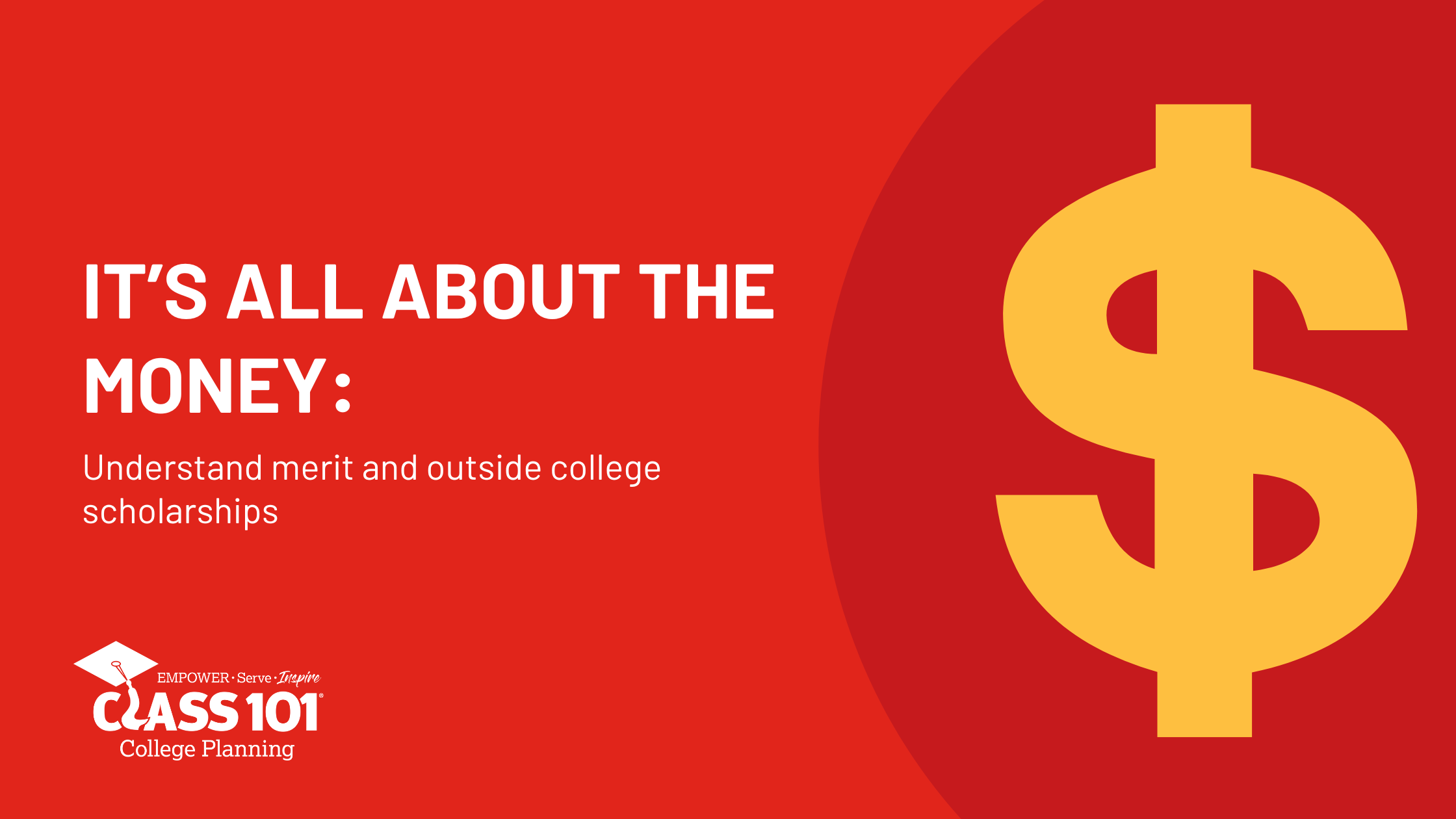January 19, 2023

College is expensive—that much is obvious. According to the Education Data Initiative, the average cost for a student to go to a four-year college out of state is $43,421 per year. And each year the cost of tuition for public and private colleges goes up.
Faced with these mounting costs, scholarships and financial aid is essential to make college affordable. However, many families can be confused by the options available to them. How can they make sure their students qualify? What opportunities are available?
In this blog, we’ll explore the two main sources of scholarships for students: merit-based and outside scholarships. We’ll explain what these opportunities entail and how you might earn the money your student needs for college.
A merit-based scholarship is what most people think about when they think about scholarships. They are, as the name suggests, scholarships that universities give out to attract high-achieving students. People can earn these scholarships with strong test scores or a high GPA or class rank. Certain universities may also reward students for participating in significant activities in their high school or community, especially if they relate to a specific program.
At Class 101, we consider these types of scholarships to be “predictable” scholarships. Almost all schools offer these scholarships and will often publish the criteria for these scholarships on their website, making it easy to assess whether or not a student is able to qualify. While some are competitive, most merit-based scholarships can be achieved by a student in the course of their normal class work—not requiring additional essays or applications beyond what they might submit on the Common App.
Students who seek college counseling early from a Class 101 advisor can get the help they need to qualify for these scholarships when it comes time to apply to college.
Outside scholarships, also known as private scholarships, are those scholarships granted by institutions other than a university or the U.S. federal government. Offered primarily by foundations, businesses, and advocacy organizations, these scholarships exist for the stated purpose of advancing an organizational mission.
For the Diabetes Scholars Foundation, for example, their Jay Franke Scholarship is meant to empower students living with diabetes by making college affordable. The Coca-Cola Company’s Coca-Cola Scholars Program Scholarship Program awards up to $20,000 to high school students who demonstrate exceptional leadership and commitment to their communities in ways consistent with the company’s values.
We consider these types of scholarships “unpredictable” sources of money. They are offered to a very small number of students, often on a competitive basis. Students are often required to submit specific applications for these scholarships—applications that require additional essays and interviews.
As all this suggests, outside applications can be time intensive in a way that merit scholarships rarely are. However, students who pursue Class 101 college advising by the start of their senior year or sooner can start working on applications early. This can reduce strain and allow them to apply for multiple scholarships, increasing their odds that they receive at least one to help them through college.
Of course, these are only a few of the options available to students. There are also athletic scholarships and creative scholarships that students can pursue depending on their skills and their colleges of interest. These however vary heavily school to school and depend on things like what division the schools athletics are classified as and what sports are offered by the school. Things like creative scholarships also vary given on the courses and specialties offered for particular arts at a given college.
We encourage anyone interested in pursuing these scholarships or the scholarships discussed in this blog to contact our college planners or find a nearby Class 101 for more information. Our advisors are happy to schedule a meeting with you to make sure that the college application process is as easy and affordable as possible. Whatever your college plans are, Class 101 Can help.
Article updated July 2024

June 24, 2025
It’s around this time of year that many students and families start looking for the right college. This process tends to start with a college list, a collection of schools to apply to that match a student’s academic profile, interests, and the kind of experience they want to have. Having a well-rounded, strategic list of […]
Read More >
June 20, 2025
Every year, Class 101 awards scholarships to four high school students through the 101 Scholars program. Given to students of outstanding merit, it asks students to explain how they’ve used their skills and talents to change their community and the lessons they’ve learned from these experiences. This year, Class 101 is pleased to announce the […]
Read More >
May 22, 2025
One of the central parts of the college application process is the application essays. While grades and test scores give some hint at a student’s capabilities, the essay provides an opportunity for a student to present themselves on their terms. It can be used to show not only who they are but how they think […]
Read More >